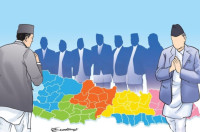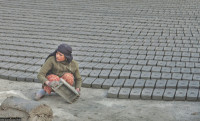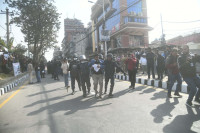Opinion
Hidden in plain sight
Violence against children is an omnipresent problem with long-term negative effects on society
Tomoo Hozumi
According to a government survey conducted in 2010, approximately 83 percent of children aged between 2 and 14 years said they were subjected to some form of violent discipline at home or at school, or in their community. This rate is indeed very high.
There are many forms of violence against children. Unicef’s latest compilation of data from 190 countries in the world shows the staggering extent of physical, sexual and emotional abuse—and reveals the attitudes that perpetuate and justify violence, keeping it ‘hidden in plain sight’, in every community and country in the world.
Not so safe places
The Unicef global report ‘Hidden in Plain Sight’ documents violence in places where children are supposed to be safe: their communities, schools, and homes. It explains the lasting, often inter-generational effects of violence, which reveal that children exposed to violence are more likely to be unemployed and to live in poverty and be violent towards others.
In Nepal, child labour and trafficking receive a lot of media attention and rightly so, because they are abhorrent and unjustifiable. However, a lot of violence against children remains hidden for many reasons, including corporal punishment and sexual harassment.
One of the biggest reasons is fear: children are afraid to report incidents of violence or sexual abuse. In many cases, parents are afraid of the stigma or ostracism too, and are more reluctant to report, even if their children make them aware of it.
The Unicef report cites that, globally, about 1 in 10 girls (about 120 million) under the age of 20 years have experienced forced intercourse or other forced sexual acts. The same report mentions that 1 in 3 ever-married adolescent girls aged 15 to 19 years (84 million) have been victims of emotional, physical or sexual violence committed by their husbands or partners.
A study by Unicef in Nepal on adolescent girls also identified sexual harassment as the biggest concern in their lives—in school and in their communities.
The Unicef global report furthermore cites that half of all adolescent girls aged 15 to 19 (around 126 million) in the world believe that a husband is justified in hitting his wife under certain circumstances. According to the National Demographic Health Survey (NDHS) 2011, about 26 percent of Nepali women aged 14 to 49 years have experienced physical or sexual violence in their lives.
Violent protectors
Although there is still a shortage of statistical data in Nepal, existing information tells us that protection violations occur within families and communities, in the workplace and in institutions, and are often perpetrated by the very people responsible for the victims’ well-being.
Newspaper and media stories frequently report on violations against children, particularly those working as domestic servants in the homes of the well-to-do in the cities and towns. And despite the many campaigns and efforts by multiple partners, including government agencies, trafficking of young girls, both inside and outside the country, continues every day.
According to estimates by the International Labour Organisation, in 2001, at least 12,000 Nepali girls are trafficked annually to India; and a recent study by the National Human Rights Commission states that the number could even be three times higher.
Child marriage is also a form of violence against children. Among married women in Nepal, 11 percent were married before the age of 14 and 29 percent of girls in the age group of 15 to 19 years are married, according to the National Demographic Health Survey 2011.
Nepal is already home to a generation of children who grew up exposed to violence during the civil conflict. Regardless of a conflict situation or not, children who are exposed to violence will be affected in their education and will be prevented from reaching their full potential. We don’t want to imagine a scenario where thousands of children grow into adults with limited skills and minimal opportunities to improve their lives.
That is why we need to act today.
Shed light on darkness
As adults, we must change our perspectives about this violence hidden in plain sight—or as the saying in Nepali goes—tuki muni ko adhyaaro (the darkness beneath the lamp). We must act and refuse to accept violence as a way to impose our will and discipline our children.
The Unicef global report presents six strategies to enable society as a whole, including families and governments, to prevent and reduce violence against children. They include supporting parents and equipping children with life skills; changing attitudes; strengthening judicial, criminal and social systems and services; and generating evidence and awareness about violence and its human and socio-economic costs in order to changes attitudes and perceptions.
Unicef Executive Director Anthony Lake, who launched the report, says, “Violence against children occurs every day, everywhere. And while it harms individual children the most, it also tears at the fabric of society—undermining stability and progress. But violence against children is not inevitable. It is preventable—if we refuse to let violence remain in the shadows.”
Hozumi is the Country Representative for Unicef Nepal




 9.12°C Kathmandu
9.12°C Kathmandu










